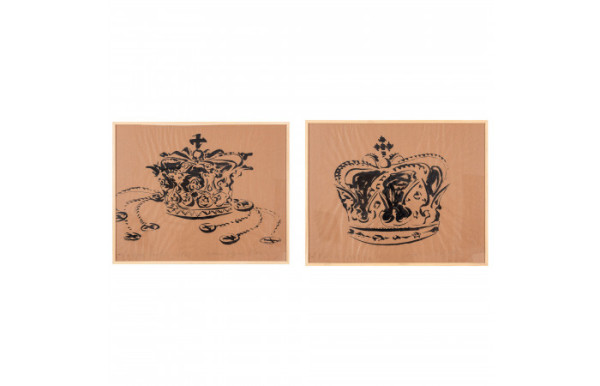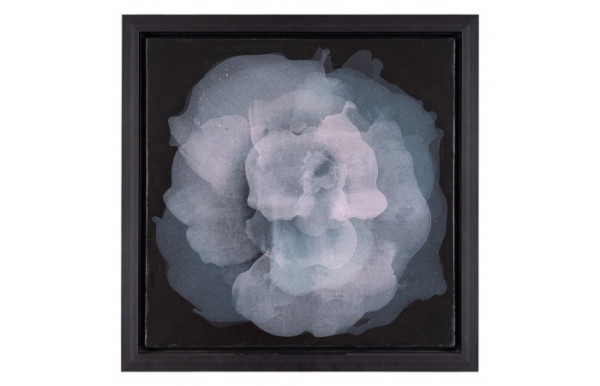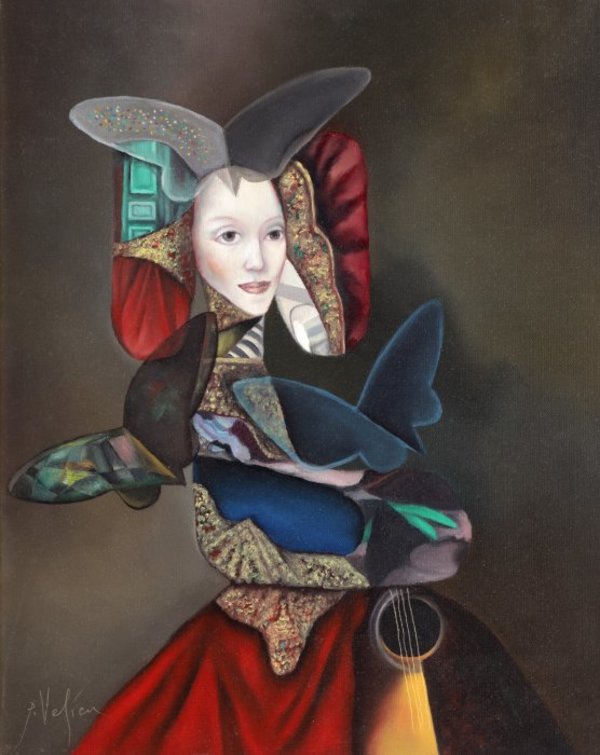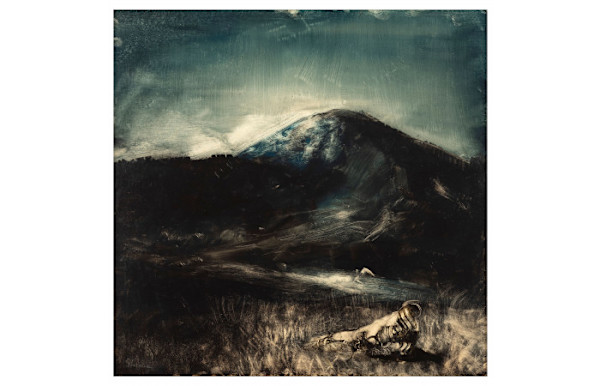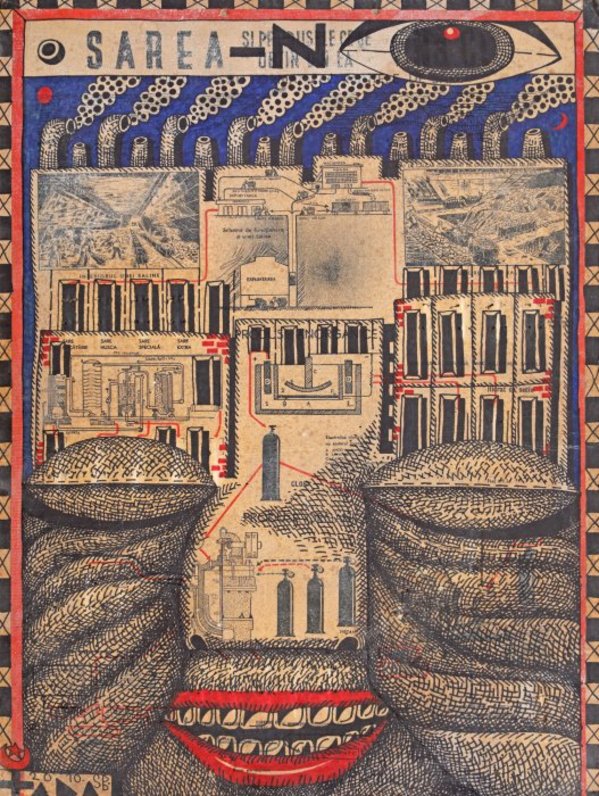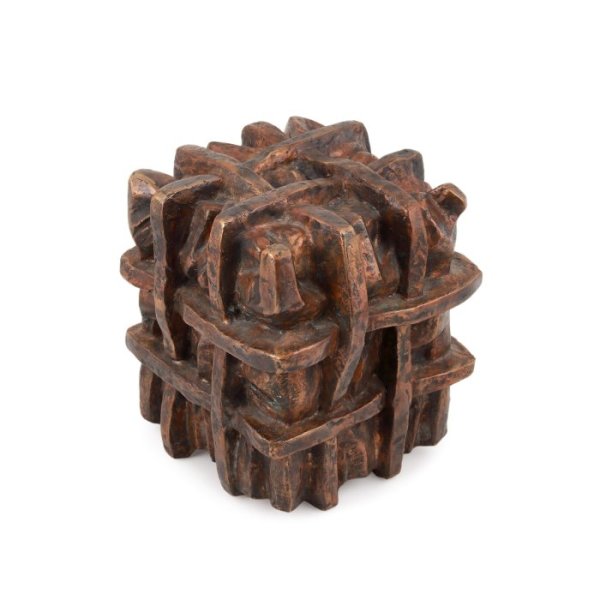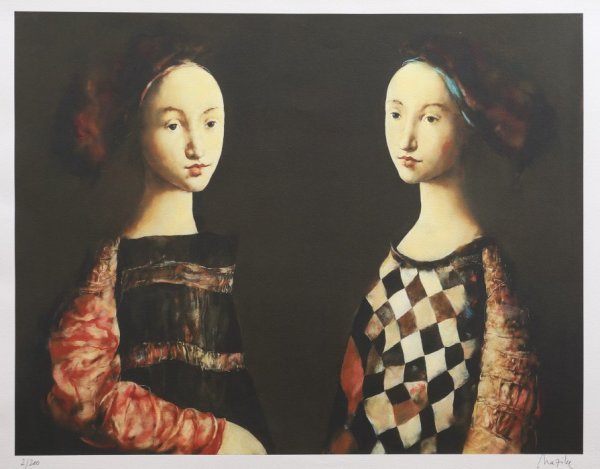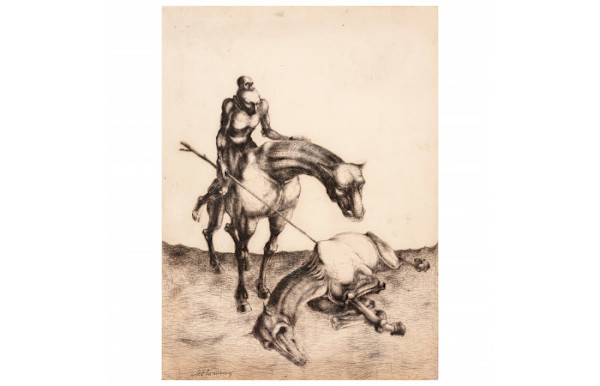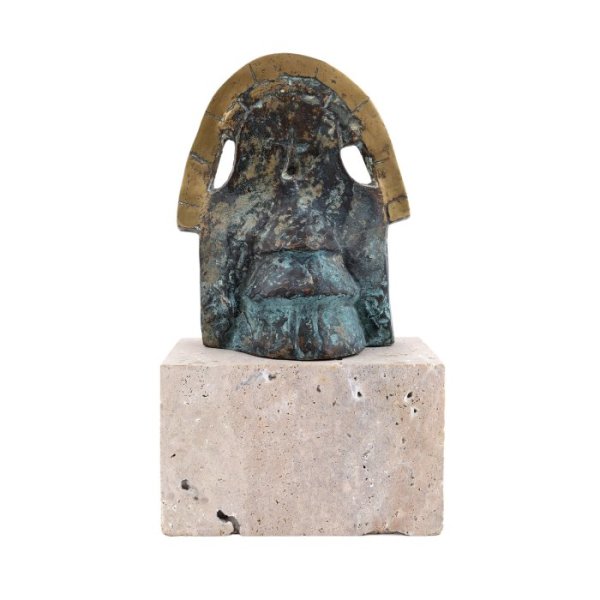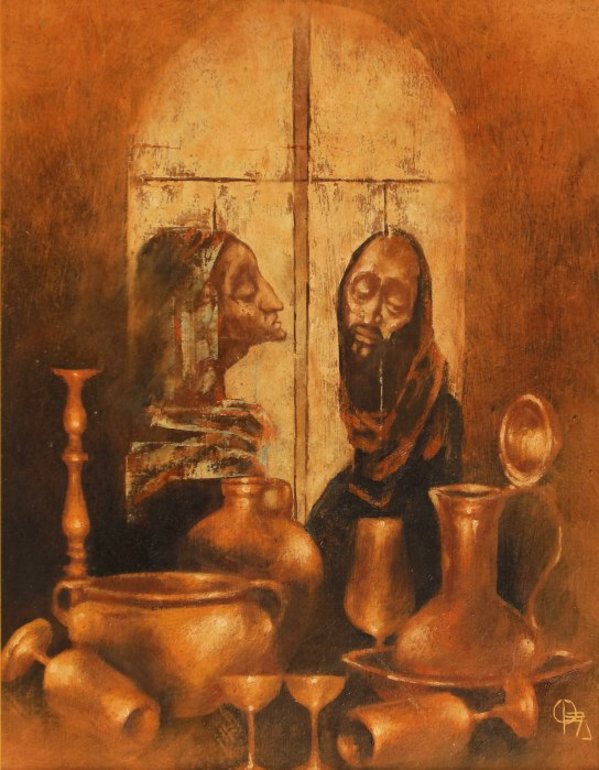- Adrian Ghenie
- Self-portrait, 2003-2004
- Oil on cardboard
- 74 x 74 cm
- Signature: signed bottom right, in red, "Ghenie"
-
Installed
Starting from the premise that "painting is the only medium through which the visceral nature of the world can be expressed," Adrian Ghenie paints, through a Brownian movement dictated by his inner states, an art sometimes brutal, inspired by history and the sensations stirred by Eastern Europe. His contact with the art world is mediated by a neighbor from his hometown, who introduced Ghenie to painters like Aivazovsky and Repin. She also noticed and encouraged his talent, becoming his first critic. In 2001, the artist graduated from the University of Art and Design in Cluj-Napoca, acquiring the technique and execution capabilities of classicism. Upon discovering the avant-garde, his work underwent a major paradigm shift. In 2005, along with his colleague, Mihai Pop, he founded the Plan B Gallery in Cluj, which would become one of the epicenters of the city's artistic life. The gallery later expanded to Berlin, where the artist also resides. In 2007, the Gallery organized the Romanian pavilion of the Venice Biennale, and in 2015, Adrian Ghenie represented - with the project "Darwin’s Room" - Romania in the 56th edition of the Venice Biennale. His works, whose undeniable value is recognized worldwide, are in collections such as: Centre Pompidou, Paris; The Metropolitan Museum of Art, New York; Los Angeles County Museum of Art; The Stedelijk Museum of Modern Art (S.M.A.K), Ghent; Museum of Modern Art, San Francisco; The Hammer Museum, Los Angeles; Centro de Arte Contemporáneo, Málaga; Francois Pinault Collection, Venice; Hort Family Collection, New York; David Roberts Collection, London; Titze Collection, Paris; The George Economou Collection, Athens; The Sander Collection, Darmstadt. Over time, several of his works have managed to cross the auction threshold of 1,000,000 euros in various internationally recognized auction houses. The artist captures in his canvases, vulnerability, frustration or longing. He illustrates the subconscious and uses, almost choreographically, a dark, brutal chromatic range. His works capture the figurative, but the artist does not hesitate to use the obscure, both by changing the focal point and by representing characters devoid of distinctive features. Adrian Ghenie incorporates the cinematic in his canvases through the use of light and textures. Conceived in the early 2000s, this work is part of a larger cycle that the author dedicates to the fragmentation and decomposition of the faces or objects that he pictorially records in his works. Seen in profile, this portrait viscerally departs from daily reality and propose complex encryptions through the corseted duct of the brush. In another portrait created in the same period, Adrian Ghenie captures the model in a frontal view, providing direct access to the full face of the same character. The eyes, nose, chin and neck of the protagonist are completely covered, through technical and stylistic dabbing and permutations. The rest of the epidermis is transformed into fragments and pieces that mimic technical materials, thus leaving room for psychological interpretations. The artist opts for the same chromatic range in all the works made for this series, so the reddish or brick-brown shades contribute to the oppressive atmosphere that emanates throughout the composition.
- Collections: Contemporary/Modern/Abstract


